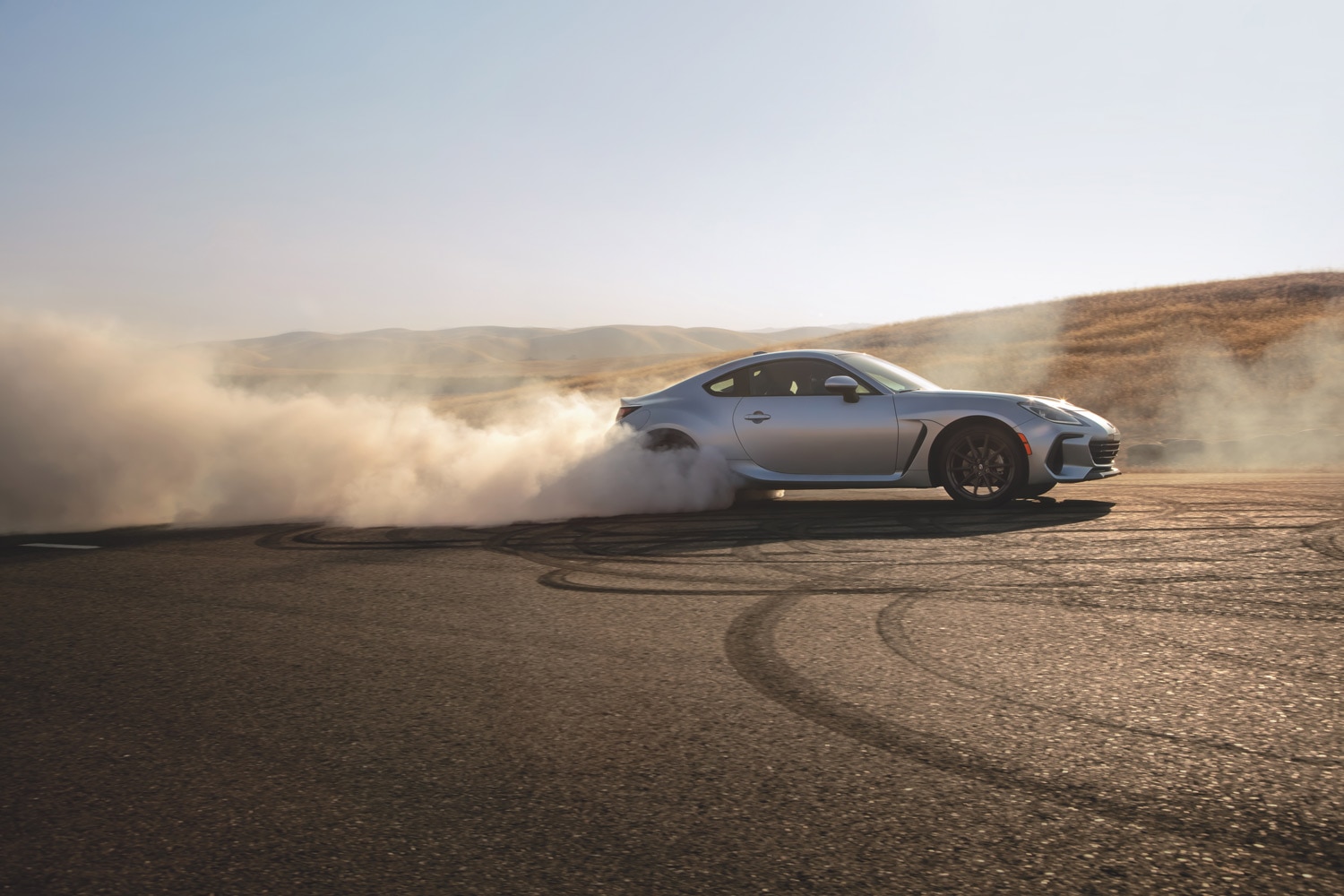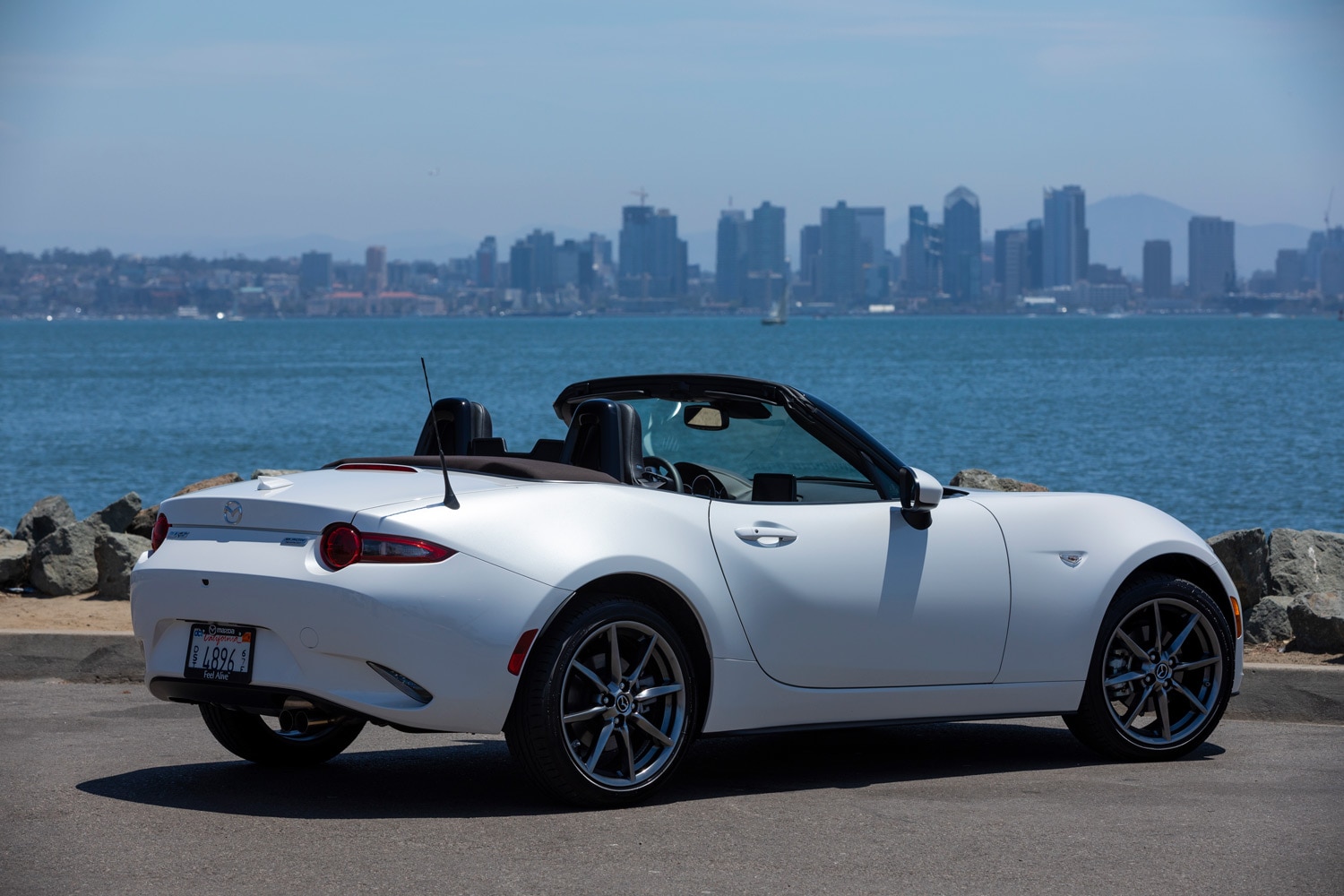What Is Rear-Wheel Drive?
The mechanics, pros, and cons of sending power only to the rear axle.
 Subaru
Subaru
In the automotive world, RWD stands for rear-wheel drive — not rewind as with a cassette player. It describes the process in a vehicle that sends power exclusively to the rear tires. In the early days of motoring, nearly all cars were rear-wheel drive, and there are advantages and disadvantages to this layout.
 Chevrolet
Chevrolet
Rear-Wheel Drive Explained
Internal-combustion vehicles with rear-wheel drive direct the engine's output to either a differential or transaxle at the rear axle. In turn, this component sends torque to the rear wheel on either side. Rear-drive electric cars have one or more motors located at the rear axle or at the individual rear wheels. Regardless of the power source, the result is the same. The rear wheels move the vehicle forward while the front wheels take care of steering.
Rear-wheel drive differs from front-wheel drive, where the front wheels steer and propel the vehicle, and all- or four-wheel drive, both of which can shuttle torque to all four wheels.
 Audi
Audi
Advantages and Disadvantages of RWD
The division of duties — front wheels steer while the rears accept all of the power — gives the driver better control of the vehicle. It also allows the vehicle to handle more torque, as there's no worry of torque steer, the unwanted turning effect that acceleration has on the front wheels of a front-wheel-drive vehicle. In racing, that means torque can be applied earlier when exiting a corner. For these and other reasons, rear-drive vehicles are favored by many enthusiasts and considered to offer a more exciting driving experience.
Due to their performance focus and additional required parts, rear-wheel-drive vehicles tend to be more expensive than front-wheel- or all-wheel-drive models. For instance, a front-engine, rear-wheel drive car requires a driveshaft running from front to back, while a front-wheel-drive car does not. Designers also have to make packaging tradeoffs to accommodate that driveshaft, which may result in a center hump in the back-seat footwell.
 Mazda
Mazda
Is a RWD Vehicle Difficult to Control?
Rear-drivers are more prone to power oversteer. Applying torque to the rear wheels while turning results in a loss of traction and causes the vehicle's back end to step out. This isn't necessarily a bad thing and falls into the pros column for many driving enthusiasts. Modern stability- and traction-control systems can also intervene to make driving an RWD vehicle a nonevent, even in less-than-ideal conditions. Plus, rear drive enables drifting, which you should experience only on a closed course.
There's a misconception that rear-drive vehicles are inherently worse in slick or snowy conditions, as a FWD car "pulls" itself through snow whereas an RWD car "pushes" through it. There's some truth to this. But with common sense, a good set of winter tires, and electronic driver aids, there's a good chance a rear-drive car will be safe and controllable in winter conditions.
Written by humans.
Edited by humans.
 David Gluckman
David GluckmanDavid has years of experience as a writer and editor for print and digital automotive publications, including Car and Driver and Road & Track. He can parallel-park a school bus, has a spreadsheet listing every vehicle he's ever tested, and once drove a Lincoln Town Car 63 mph in reverse. When not searching for the perfect used car, he can be found sampling the latest gimmicky foodstuffs that America has to offer.
Related articles
View more related articles